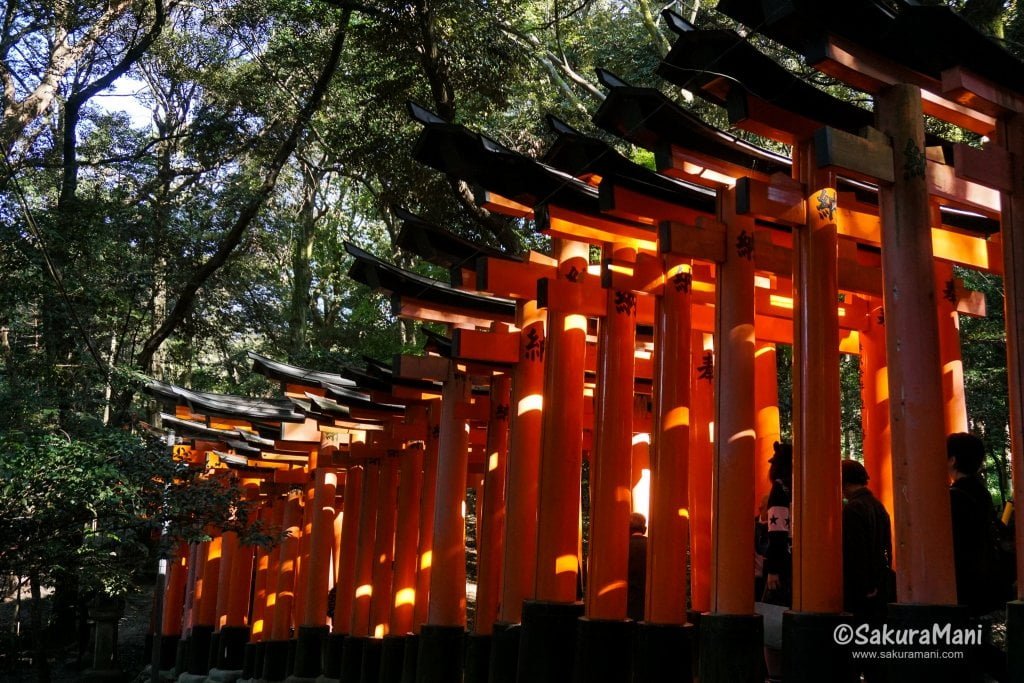Lets learn how to count in Japanese. There are two numeral systems in Japanese – the Sino-Japanese system(漢字音 kanjion)and the native Japanese system (which uses 和語 wago or native Japanese words). Numbers are usually written in kanji but Arabic numerals are also accepted.
We can consider Sino-Japanese (漢語由来) way of counting to be 音読み (onyomi, chinese reading) and Japanese native (和語由来) way of counting to be 訓読み (kunyomi, Japanese reading).
Zero is either called 零 レイ ‘rei’ or ゼロ ‘zero’ and the symbol ‘〇’ is widely used. Sometimes it is also referred to as maru.
Sino-Japanese system (漢語由来) :
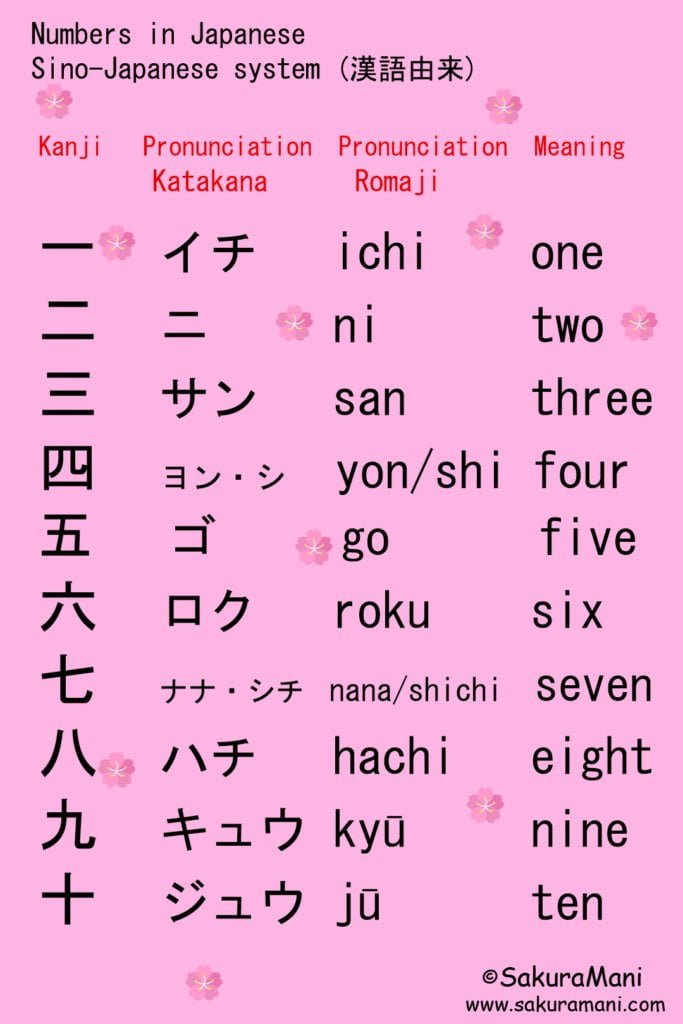
Here is a more interesting chart (with readings in Hiragana).
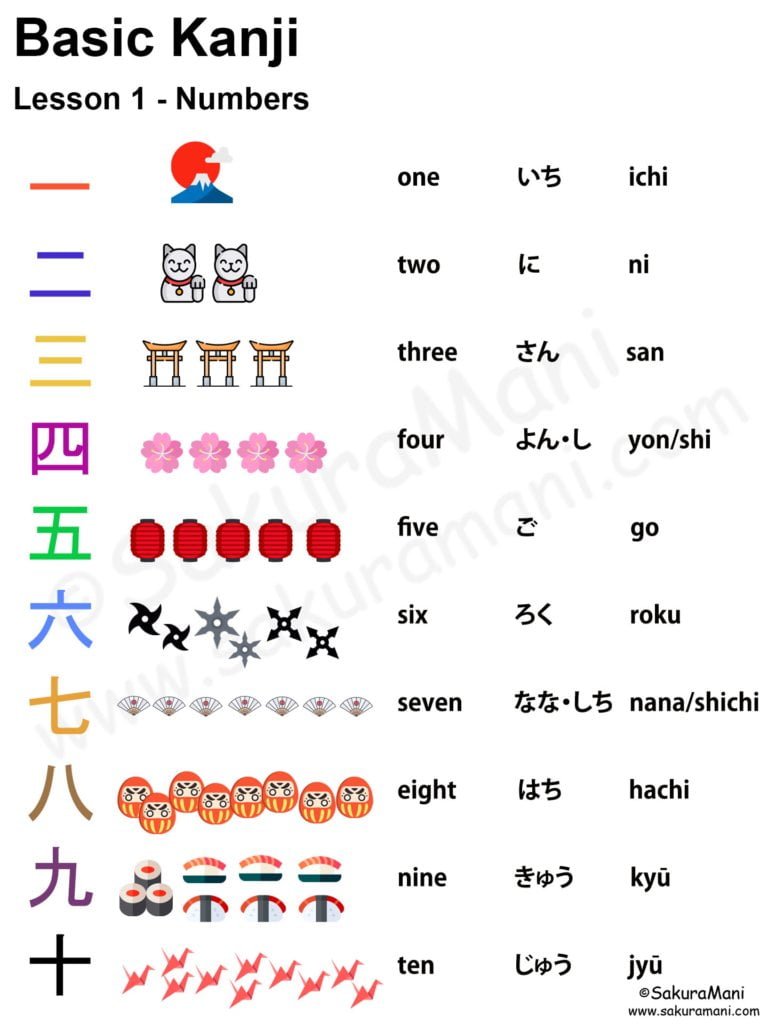
Native Japanese system (和語由来) :
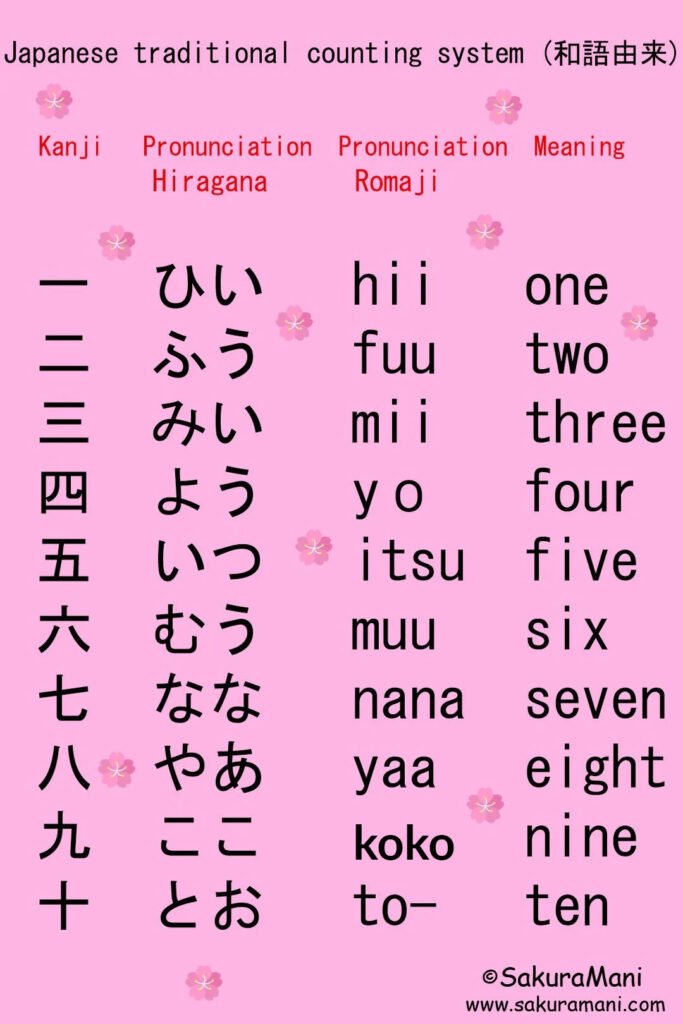
This is an old counting method and not normally used or taught nowadays. Instead a generic counter which is derived by adding tsu (つ) at end is considered native Japanese numeral system or yamatokoba (大和言葉). These actually mean ‘number of things’. One simple example would be, 「これを一つください」”Kore wo hitotsu kudasai”, it means “Please give me one of this”. Hitotsu implies “one of ~”.
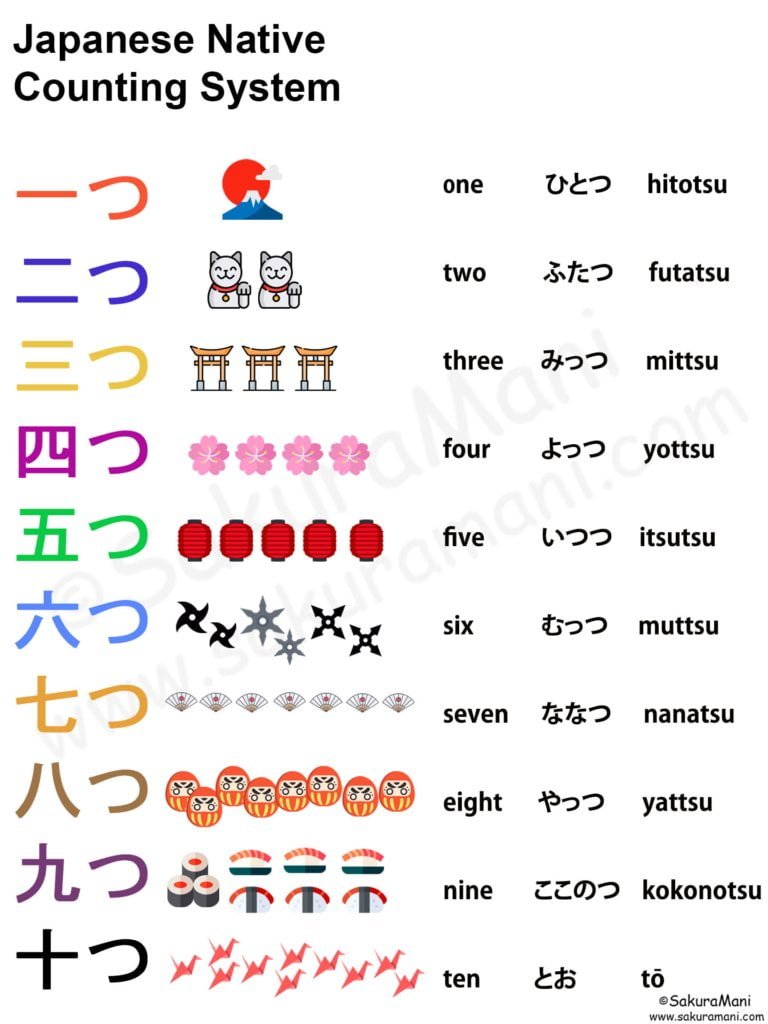
However, this system is used to count only till 10. Thus, kango (漢語) is used for counting from eleven onwards.

Japanese uses the same pattern of counting numbers above ten. The number 11 which is read as jūichi in Japanese can be broken down into two numbers jū i.e. 10 and ichi i.e. 1. Similarly, 20 nijū can be broken down to ni i.e. 2 and jū i.e. 10 and the number 21 nijuichi can be broken down to nijū i.e 20 and ichi i.e. 1.
However, it is not entirely correct to state that native Japanese system cannot be used to count numbers after 10. Below are some examples from old counting system using wago (和語).
11 とおあまりひとつ touamarihitotsu, 12 とおあまりひとつ touamarifutatsu………… 20 はた hata, 30 みそ miso, 40 よそ yoso….
Although the Sino-Japanese counting system is more prevalent and used in everyday context it is interesting to note that a combination of the traditional and Sino-Japanese counting system is used as a counter for people and some objects . 人 (にん nin)is the counter for persons 一人, for example(ひとり hitori)one person, 二人(ふたり futari)two persons, 三人(さんにん sannin)three persons, 四人(よにん yonin)four persons. Hitori and futari use native Japanese counting but Sino-Japanese system is used from sannin onward.
The Japanese traditional counting system is also used as a universal counter (助数詞 josūshi) except for counting living things, money and time. For more on counters you can take a look at my article on Japanese counters or 助数詞 josūshi.
Furthermore, let us also learn some large numbers in Japanese.
100 百 ヒャク hyaku
1000 千 セン sen
10,000 一万 イチマン ichiman
100,000 十万 ジュウマン juuman
1000,000 百万 ヒャクマン hyakuman (one million)
10, 000,000 千万センマン senman (10 million)
100,000,000 一億 イチオク ichioku (100 million)
1000,000,000 十億 ジュウオク juuoku (1 billion)
1000,000,000,000 一兆 イッチョウ icchou (1 trillion)
